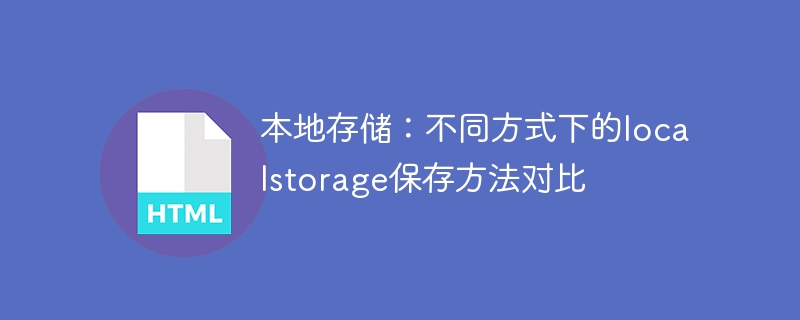

Local storage: Comparison of localstorage saving methods in different ways
In modern web development, local storage is a very important technology, which allows us to The data is saved to the user's browser so that it can be easily retrieved and used later. In this article, we will focus on different ways of using localstorage for data storage and compare them in detail. During the comparison, we will provide specific code examples so that readers can better understand and use these methods.
First, let us briefly introduce localstorage. Localstorage is a new feature of HTML5 that provides a simple key-value pair storage mechanism that can permanently save data in the browser. Unlike cookies, localstorage data is stored in the browser and is not sent to the server with the HTTP request. This makes localstorage ideal for storing and using data in front-end development.
Next, we will discuss two different methods of saving localstorage: using native JavaScript and using a modern framework (such as React).
// 保存数据 localStorage.setItem('name', 'Tom'); // 获取数据 var name = localStorage.getItem('name'); console.log(name); // 输出:Tom // 删除数据 localStorage.removeItem('name');
The above code demonstrates how to use the localStorage object to save, obtain and delete data. The key-value pair can be stored in localstorage through the setItem method, the corresponding value can be obtained based on the key name using the getItem method, and the specified data can be deleted using the removeItem method.
import React, { useState } from 'react'; import { useLocalStorage } from 'react-localstorage'; function App() { const [name, setName] = useState(''); useLocalStorage('name', name); return ( setName(e.target.value)} /> 您输入的姓名是:{name}
); }
The above code shows how to use the react-localstorage package in a React application to save the name data entered by the user in the input box. In the code, the useLocalStorage function saves the data to localstorage, and after the page is reloaded, the previously saved value is automatically assigned to the name variable.
By comparing the above two saving methods, we can draw the following conclusions:
To sum up, localstorage is a very convenient local storage method whether using native JavaScript or modern frameworks. Depending on the size and needs of the project, we can choose the appropriate preservation method. If you are a novice developer, you can start by using native JavaScript, which is very helpful for understanding and mastering how localstorage works. After you master the basic usage, you can try to use modern frameworks for more advanced data management and operations.
I hope this article can help everyone understand and use localstorage, allowing us to process data more flexibly and efficiently in front-end development.
The above is the detailed content of Compares different local storage methods. For more information, please follow other related articles on the PHP Chinese website!




